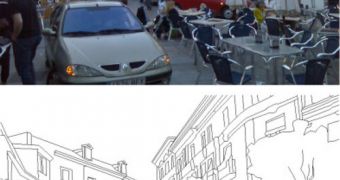Experts at the Stanford University have recently made important strides in creating a solid foundation for mind-reading technologies. The work they and collaborators at other universities carry out in the field of neural decoding is tremendously important to that end.
Such investigation are conducted by placing volunteers inside Magnetic Resonance Imaging (MRI) machines, and then showing each participant the same set of photographs, in the exact same order.
Using the capabilities of the MRI instrument, experts can determine which area of the brain is the most active while test participants look at and process the images, but also the patterns in which neurons fire in response to a specific shape or landscape.
Figuring out the patterns generated by the firing neurons is a process the Stanford team calls decoding. For the new study, experts there collaborated with colleagues from the Ohio State University (OSU) and the University of Illinois in Urbana–Champaign (UIUC).
Psychologists and computer scientists decided to carry out MRI investigation similar to the ones performed in the past, but with a catch. Rather than showing participants photographs, the experts only showed the basic, stripped-down version of the images.
This meant that each participant only saw the sparse line drawings of various scenes. What the experts discovered as a result of this work could be used to improve both computer vision, and our understanding about how the visually impaired make sense of the visual stimuli they receive.
Even with the contour drawings, investigators were able to read test subjects' minds with the same level of accuracy as before. The study team included Stanford computer scientist Fei-Fei Li.
“By noting what is driving the brain, you will be learning the way the brain works, why certain cues are more important than other cues,” the expert says. In the medical field, this technology could be used to make sense of how coma patients are doing.
“Inferring what people are seeing is clinically important,” the Stanford expert adds. He says that the MRI studies were focused on a region of the brain called the parahippocampal place area.
“The representations in our brain for categorizing these scenes seem to be a bit more abstract than some may have thought – we don't need features such as texture and color to tell a beach from a street scene,” explains OSU psychologist Dirk Bernhardt-Walther.
“Lines capture really important structure, and you can find evidence of that in the brain,” Li concludes.

 14 DAY TRIAL //
14 DAY TRIAL //